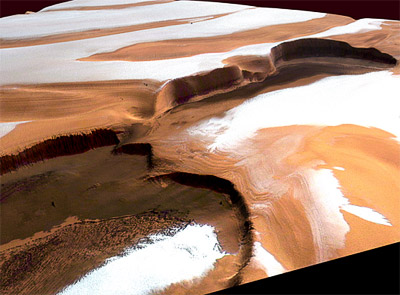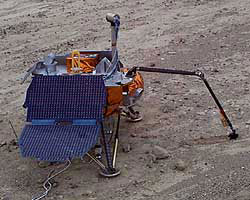Mars
Mars, often referred to as the Red Planet, is named after the Roman God of War.
Mars has an interesting environment: it is covered with red soil and rocks and there are slow-moving small tornados called dust devils on it. They can squirt dust miles into the atmosphere.
It's the fourth planet from the sun. It has a thin atmosphere. The atmosphere is rich with carbon dioxide. Since it's inside the asteroid belt, it's made of rock and has no rings.
Mars has two moons. They are both smaller than our moon. The moons are named Phobos and Deimos and their shape is lumpy. They orbit close to Mars. Some people think that the moons are bits of Mars and most people think they are asteroids caught in the orbit of Mars. Phobos means fear and Deimos means flight.
It's cold on Mars. You could not live on Mars. The only thing that could live there is a plant. But even that couldn't survive its extremely cold temperatures.
Other than the Earth, Mars is the most likely to have had life because there are traces of an old ocean on it. Canadian researchers have discovered that a white, salty substance churned up by a rover-vehicle is the first "on-the-spot" evidence of water just beaneath the surface of the Red Planet. That means that there could be life on Mars.
In some ways, Mars is like Earth. It has an atmosphere. The atmosphere on Mars is much thinner and has much more carbon dioxice and much more oxegen.
Mars is made of rock. The Earth is made of rock and water.
In other ways it isn't like Earth. The temperatures here are not as extremely cold as they are on Mars. Our sky isn't red and we have mountains and vegetation while Mars is flat and barren. Earth is both flat and mountainous.
What's new is the possibility of large amounts of water in warmer parts of the planet. Wouldn't that be interesting? If there was warm water, it means that there could be life.
This is a picture of the Phoenix. It landed May 28 2008 (the day I posted this).
This is how small the sun is during a martian sunset.




